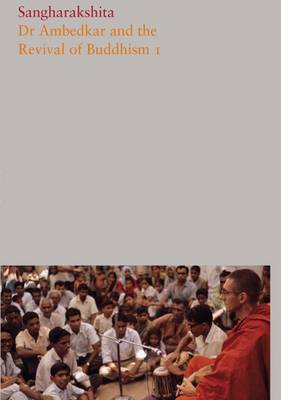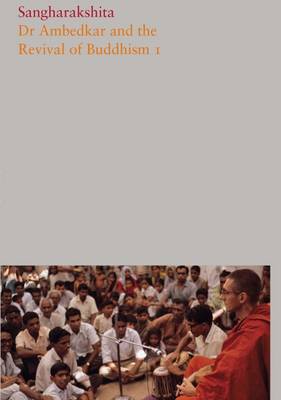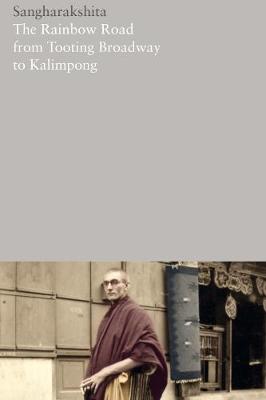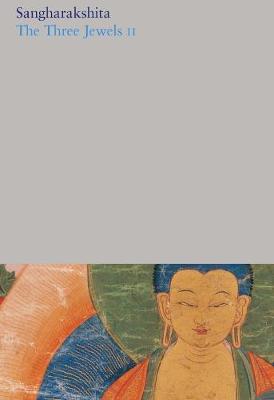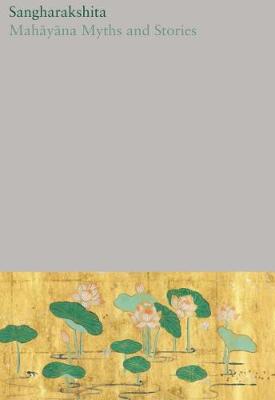The Complete Works
6 primary works
Book 1
The eagerly awaited Complete Works of Sangharakshita begins with Volume 9 on Dr Ambedkar and the revival of Buddhism. One of the most far-reaching of Sangharakshita's contributions to modern Buddhism was giving shape to the Buddhist conversion movement begun by the great Indian statesman and reformer, Dr B.R. Ambedkar. In 1956, along with hundreds of thousands of his followers, Ambedkar renounced the Hindu caste system - according to which they were condemned to be `untouchable' - and converted to Buddhism, thus beginning a new life.The first part of this volume tells the story of how Ambedkar overcame the suffering and struggle of his early years to become the shaper of the Indian constitution and the leader of his people to a new life; and how, following Ambedkar's untimely death, Sangharakshita took on the challenge of teaching Buddhism to the new community of Buddhists. The second part is a collection of 36 edited talks, many published here for the first time, from Sangharakshita's tour of the Buddhist communities in India in 1981-2.Wherever and in whatever circumstances you live, there is much here to bring new life and depth to your Buddhist practice.
Book 1
The eagerly awaited Complete Works of Sangharakshita begins with Volume 9 on Dr Ambedkar and the revival of Buddhism. One of the most far-reaching of Sangharakshita's contributions to modern Buddhism was giving shape to the Buddhist conversion movement begun by the great Indian statesman and reformer, Dr B.R. Ambedkar. In 1956, along with hundreds of thousands of his followers, Ambedkar renounced the Hindu caste system - according to which they were condemned to be 'untouchable' - and converted to Buddhism, thus beginning a new life.The first part of this volume tells the story of how Ambedkar overcame the suffering and struggle of his early years to become the shaper of the Indian constitution and the leader of his people to a new life; and how, following Ambedkar's untimely death, Sangharakshita took on the challenge of teaching Buddhism to the new community of Buddhists.The second part is a collection of 36 edited talks, many published here for the first time, from Sangharakshita's tour of the Buddhist communities in India in 1981-2. Wherever and in whatever circumstances you live, there is much here to bring new life and depth to your Buddhist practice.
Book 2
The Rainbow Road from Tooting Broadway to Kalimpong: Memoirs of an English Buddhist
by Sangharakshita
Published 20 March 2017
Sangharakshita read the Diamond Sutra for the first time the summer he turned seventeen. It seemed to awaken him to something whose existence he had forgotten, and he joyfully embraced those profound teachings `with an unqualified acceptance'. This experience decided the whole future direction of his life.In this first volume of memoirs he describes how, from a working-class childhood in the London suburb of Tooting, he came, a twenty-four-year-old Buddhist novice monk, to Kalimpong in the eastern Himalayas. Sangharakshita paints a vivid picture of the people, the places and the experiences that shaped his life: his childhood, his army days, and the gurus he met during his years as a wandering ascetic staying in the caves and ashrams of India. He moves between the ordinary and the extraordinary, from the mundane to the sublime; his narrative takes in the psychological and aesthetic, the philosophical and spiritual. His experiences are both universal - love and loss, comedy and tragedy - and unique to what is an exceptional life.
Book 3
For Buddhists everywhere, the Three Jewels - the Buddha, the Dharma and the Sangha - are at the heart of daily life and practice. But how can we engage with these precious ideals in a way that makes a difference to how we live? In this, the companion volume to The Three Jewels I, in which the nature of Going for Refuge to the Three Jewels is explored, are gathered three much-loved books: Who is the Buddha?, What is the Dharma?, and What is the Sangha? In this volume, Sangharakshita tackles a great range of subjects, offering original and imaginative perspectives on all the topics one might expect an introduction to Buddhism to cover - karma and rebirth, Nirvana and the spiral path, and the nature of Buddhahood itself, as well as clear and pragmatic guidance on matters of personal concern, such as individuality, fidelity, gratitude, parenthood and seeking a spiritual teacher. The teachings are underpinned by many references to the Pali canon and other sources, to provide an authentic guide to the Dharma life in all its aspects, and much encouragement and inspiration to live that life to the full.
Book 4
`Once upon a time there was a rich old man who lived in a vast mansion aA |' Aware that whatever our age, we never lose our responsiveness to story, myth and drama, the Buddha often told stories and parables, and in the Mahayana phase of the development of Buddhism, the stories became ever more mythical and magical. In this volume, Sangharakshita introduces us to the strange and wonderful worlds of three of the best-loved Mahayana sutras, worlds from which - if we pay close attention - we can return with treasures in the form of teachings and advice. Thanks to Sangharakshita's imaginative and creative approach to these sutras, their gems, mythical or even magical though their origins may be, turn out to be exchangeable for hard currency - the practical business of how we are to live our lives in the everyday world. From the transcendental critique of religion and the means of unification offered by the Vimalakirti-nirdesa to the light shed on economics, ecology and politics by the Sutra of Golden Light, and the vision of life as a journey offered by the White Lotus Sutra, these commentaries offer a unique and transformative perspective on the value of human existence.
Book 5
In this volume are collected two works that complement each other very well, each being in its own way at the heart of Sangharakshita's writings. A Survey of Buddhism was first published in 1957, and Lama Anagarika Govinda wrote of that first edition, `It would be difficult to find a single book in which the history and development of Buddhist thought has been described as vividly and clearly as in this survey. For all those who wish to know the heart, the essence of Buddhism as an integrated whole, there can be no better guide than this book.' The Survey, whose ninth edition is reproduced here, continues to provide an indispensable study of the entire field of Buddhist thought and practice, covering all major doctrines and traditions, and placing their development in historical and cultural context.The Buddha's Noble Eightfold Path of course outlines the best-known formulation of the Buddha's teaching, and if its name sounds archaic, Sangharakshita's vivid explanation of how to follow that path provides a fresh and inspiring guide. Here, to the original text are added seminar extracts that give a range of helpful perspectives on the stages of the path. This volume includes a full section of endnotes locating the teachings to the suttas and sutras that inspired them, as well as a Foreword by Dharmachari Subhuti looking at these two texts from an inspirational and a critical perspective, and bringing out the inner connection between them.
